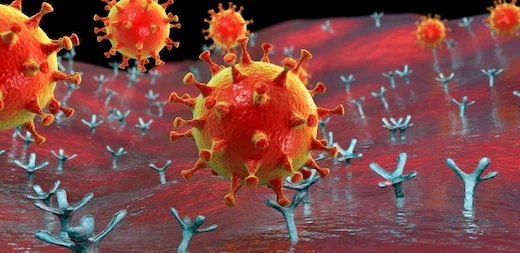
A number of new Covid-19 symptoms have emerged, one of which is an olfactory disorder, parosmia.
Ear, Nose, Throat, and Head Neck Specialist (ENT-HN) at UGM Academic Hospital (RSA), dr. Anton Sony Wibowo, Sp.T.H.T.K.L., M.Sc., FICS said that parosmia is a symptom of smell disorder that causes someone to sense smell differently from what it is supposed to be.
“Patients with parosmia perceive odors that do not match the reality,” he explained when contacted, Monday (4/1).
For example, the smell of a rose should be fragrant, but the patient perceives it with another kind of odors, such as the unpleasant one or the others. Anton explained the smell perceptions of parosmia are due to various causes. It is different from the smell disorder of cacosmia, which causes someone to experience a constant unpleasant smell sensation.
The lecturer at FKKMK UGM said that symptoms of parosmia are quite common in Covid-19 patients abroad. Several studies abroad show parosmia incidence is quite a lot, ranging from 50.3-70 percent. However, in Indonesia, there has not been much research related to parosmia.
Parosmia can occur in Covid-19 patients due to the SARS Cov 2 virus affecting a person’s olfactory processing pathways. It can be in the olfactory nerve receptors (cranial nerve 1), olfactory nerve, or the olfactory nerve’s perceptual center.
Apart from viruses, the cause of parosmia can vary. Some of them are upper respiratory tract infections, head injuries, or brain disorders such as brain tumors.
Furthermore, Anton explained that olfactory disorders due to Covid-19 virus infection are not limited to smell loss or anosmia, which has appeared at the start of the pandemic, and parosmia. There are several other olfactory disorders, one of which is hyposmia, a decreased ability to detect odors. Then, cacosmia, which makes a person constantly smell unpleasant odors.
“In Covid-19 infection, there is a smell disorder, known as dysosmia, which can be in the form of anosmia, parosmia, hyposmia, or cacosmia,” he explained.
Author: Ika
Photo: Shutterstock.com

